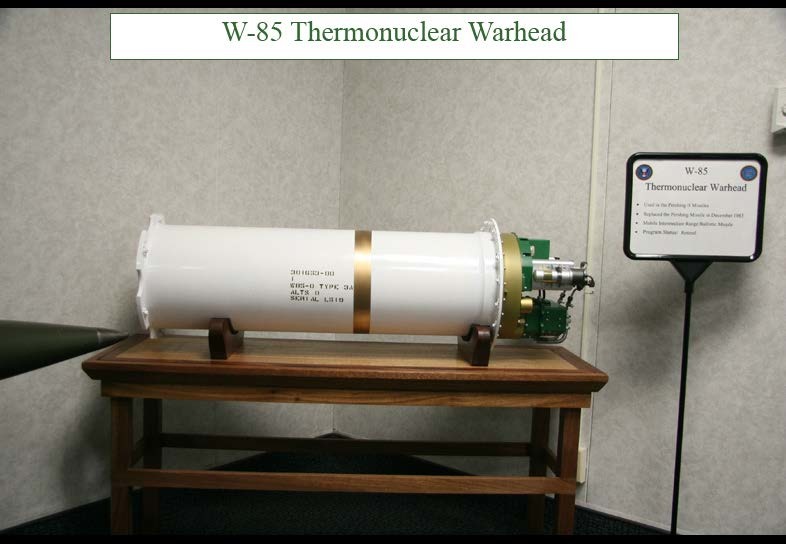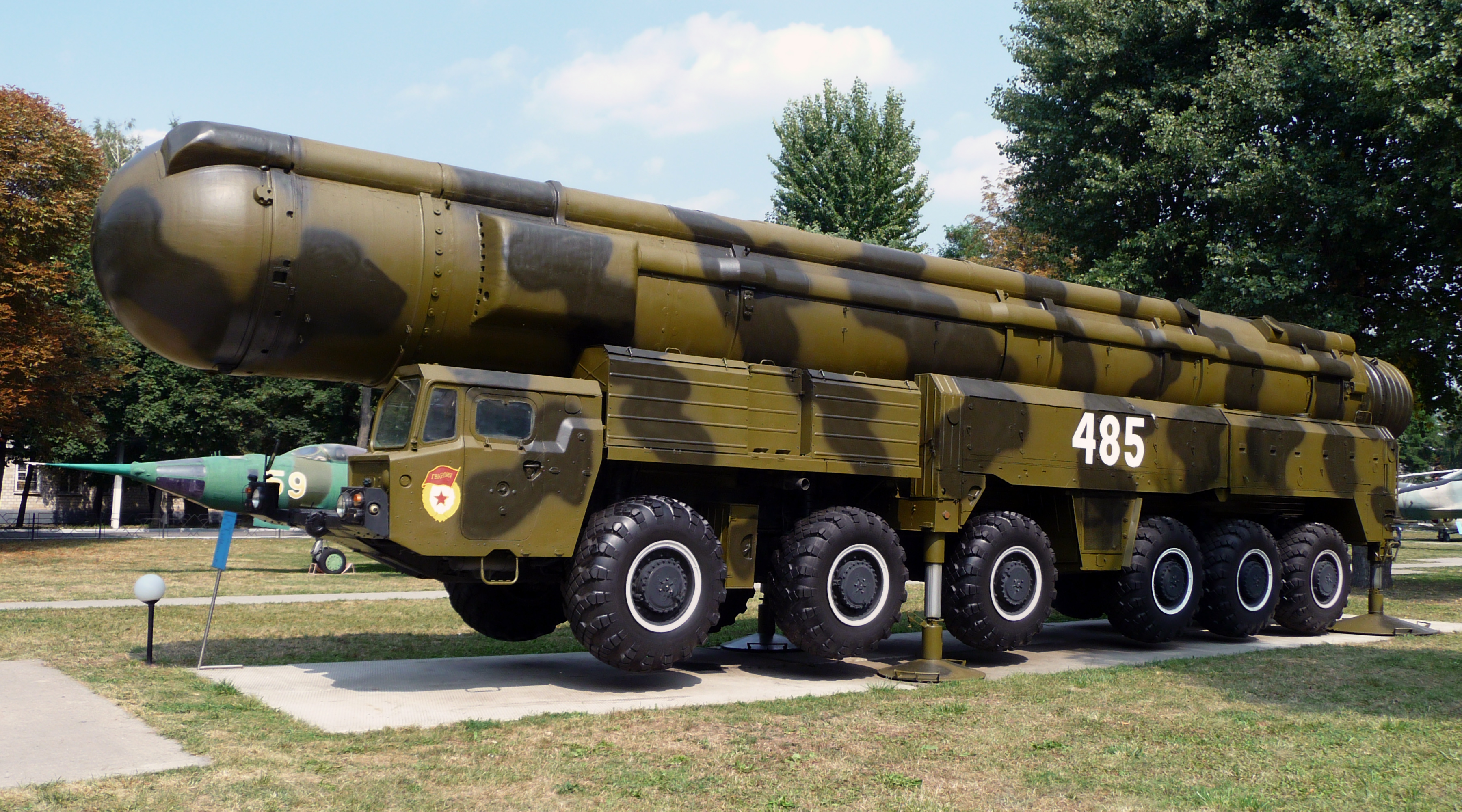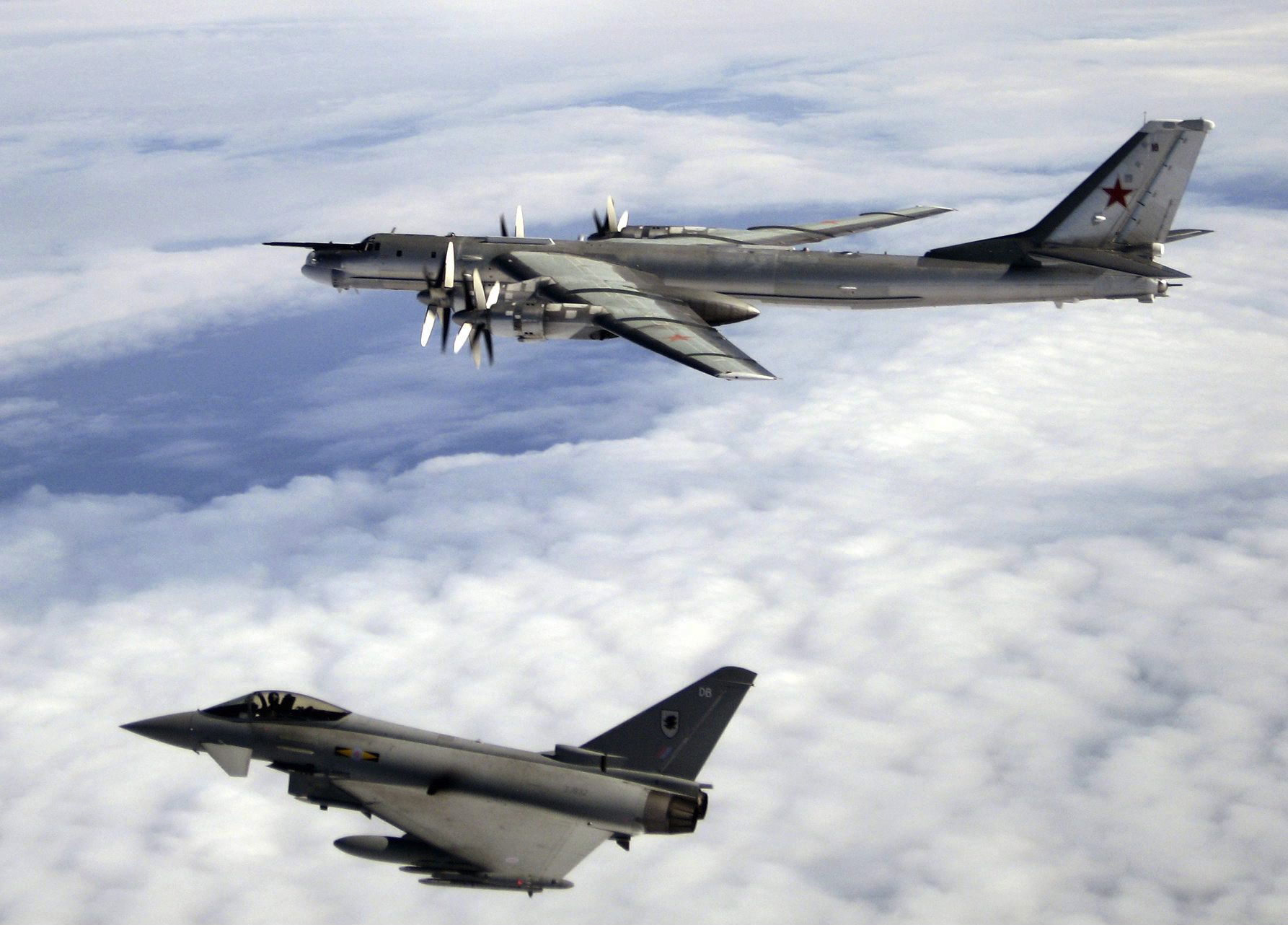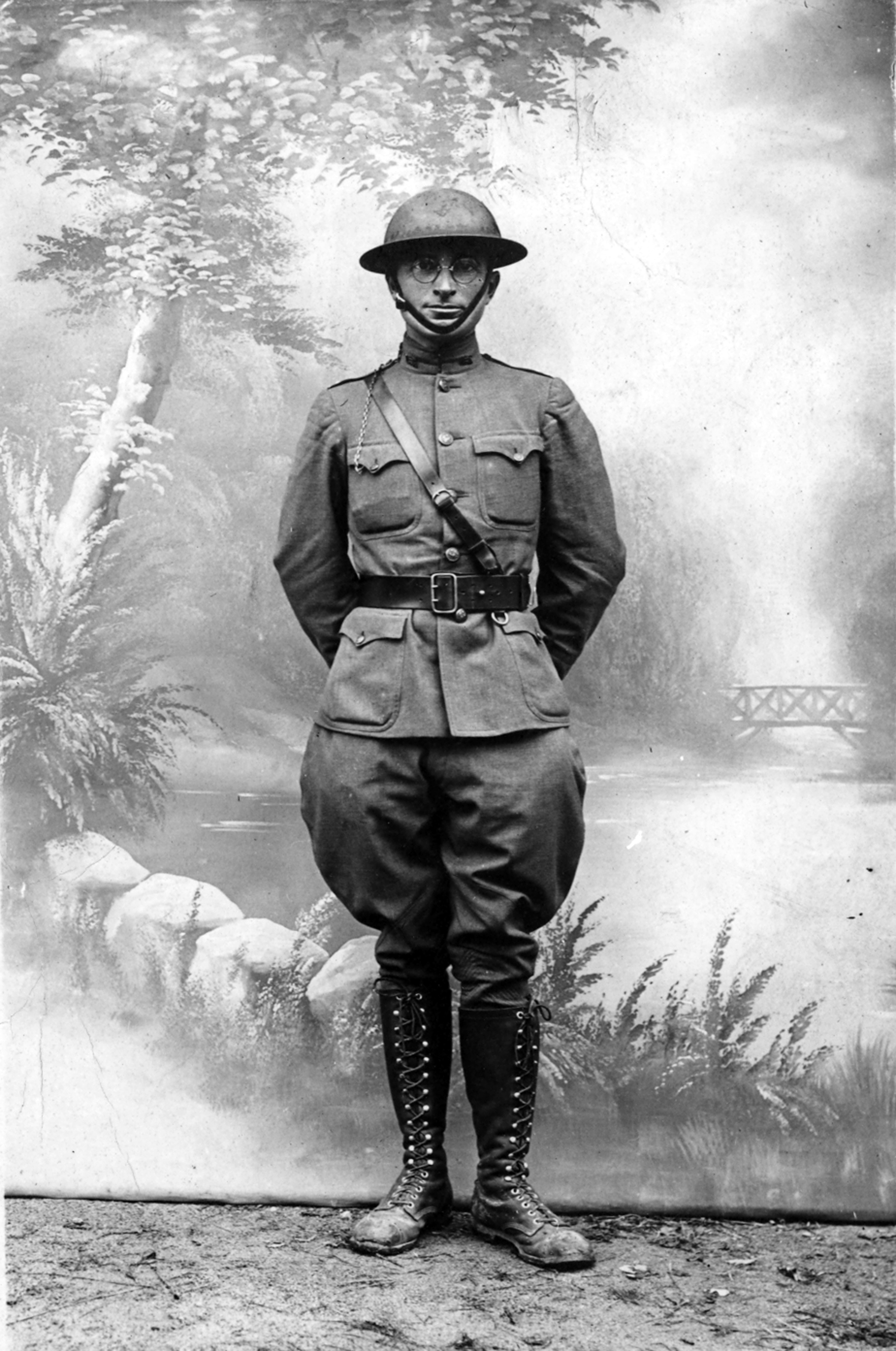|
Pershing 2
The Pershing II Weapon System was a solid-fueled two-stage medium-range ballistic missile designed and built by Martin Marietta to replace the Pershing 1a Field Artillery Missile System as the United States Army's primary nuclear-capable theater-level weapon. The U.S. Army replaced the Pershing 1a with the Pershing II Weapon System in 1983, while the German Air Force retained Pershing 1a until all Pershings were eliminated in 1991. The U.S. Army Missile Command (MICOM) managed the development and improvements, while the Field Artillery Branch deployed the systems and developed tactical doctrine. Development Development began in 1973 for an updated Pershing. The Pershing 1a had a 400 kt warhead, which was greatly over-powered for the Quick Reaction Alert (QRA) tactical role the weapon system filled. Reducing warhead yield, however, required a significant increase in accuracy to match Pershing 1a's ability to kill hard targets like command bunkers. The contract went to M ... [...More Info...] [...Related Items...] OR: [Wikipedia] [Google] [Baidu] |
Medium-range Ballistic Missile
A medium-range ballistic missile (MRBM) is a type of ballistic missile with medium range, this last classification depending on the standards of certain organizations. Within the U.S. Department of Defense, a medium-range missile is defined by having a maximum range of between . In modern terminology, MRBMs are part of the wider grouping of theatre ballistic missiles, which includes any ballistic missile with a range of less than . Specific MRBMs * DF-2 * DF-16 * DF-17 * DF-21 (China) , (Saudi Arabia) * SSBS S1 * Agni II * Agni-P * Ashoura * Emad * Fajr-3 (estimation) * Ghadr-110 * Khorramshahr (missile) * Sejjil * Shahab-3 * Badr-2000 * Jericho II * Hwasong-9 * Hwasong-10/RD-B Musudan * Pukkuksong-1 * Pukkuksong-2 * Pukkuksong-2 * Rodong-1 * Ababeel * Ghauri-I * Ghauri-II * Ghauri-III (Cancelled) * Shaheen-II * Shaheen-III [...More Info...] [...Related Items...] OR: [Wikipedia] [Google] [Baidu] |
Multistage Rocket
A multistage rocket or step rocket is a launch vehicle that uses two or more rocket ''stages'', each of which contains its own engines and propellant. A ''tandem'' or ''serial'' stage is mounted on top of another stage; a ''parallel'' stage is attached alongside another stage. The result is effectively two or more rockets stacked on top of or attached next to each other. Two-stage rockets are quite common, but rockets with as many as five separate stages have been successfully launched. By jettisoning stages when they run out of propellant, the mass of the remaining rocket is decreased. Each successive stage can also be optimized for its specific operating conditions, such as decreased atmospheric pressure at higher altitudes. This ''staging'' allows the thrust of the remaining stages to more easily accelerate the rocket to its final speed and height. In serial or tandem staging schemes, the first stage is at the bottom and is usually the largest, the second stage and subseq ... [...More Info...] [...Related Items...] OR: [Wikipedia] [Google] [Baidu] |
Ukrainian Soviet Socialist Republic
The Ukrainian Soviet Socialist Republic ( uk, Украї́нська Радя́нська Соціалісти́чна Респу́бліка, ; russian: Украи́нская Сове́тская Социалисти́ческая Респу́блика, group=note), abbreviated as the Ukrainian SSR, UkrSSR, or UkSSR, and also known as Soviet Ukraine, was one of the Republics of the Soviet Union, constituent republics of the Soviet Union from 1922 until 1991. In the anthem of the Ukrainian Soviet Socialist Republic, anthem of the Ukrainian SSR, it was referred to simply as ''History of Ukraine, Ukraine''. Under the Soviet One-party state, one-party model, the Ukrainian SSR was governed by the Communist Party of the Soviet Union through its Soviet democracy, republican branch: the Communist Party of Ukraine (Soviet Union), Communist Party of Ukraine. The first iterations of the Ukrainian SSR were established during the Russian Revolution, particularly after the October Revol ... [...More Info...] [...Related Items...] OR: [Wikipedia] [Google] [Baidu] |
RSD-10 Pioneer
The RSD-10 ''Pioneer'' (russian: ракета средней дальности (РСД) «Пионер» Wikipedia:Romanization of Russian, tr.: ''raketa sredney dalnosti (RSD) "Pioner"''; en, Medium-Range Missile "Pioneer") was an intermediate-range ballistic missile with a nuclear weapon, nuclear warhead, deployed by the Soviet Union from 1976 to 1988. It carried GRAU designation 15Ж45 (''15Zh45''). Its NATO reporting name was SS-20 Saber. Its deployment was a major cause of NATO's NATO Double-Track Decision, 'Double-Track Decision', which led to the deployment of more medium-range nuclear weapons in Western Europe. The RSD-10 was withdrawn from service under the 1987 Intermediate-Range Nuclear Forces Treaty. Specifications The missile was high, in diameter and weighed 37.1 tons. It was based on two solid-fuel fiberglass clad stages of the RT-21 Temp 2S (SS-16 ''Sinner''), so it was also known as the RT-21M ''Pioneer''. The missile's range was from initially; the final ... [...More Info...] [...Related Items...] OR: [Wikipedia] [Google] [Baidu] |
Soviet Union
The Soviet Union,. officially the Union of Soviet Socialist Republics. (USSR),. was a transcontinental country that spanned much of Eurasia from 1922 to 1991. A flagship communist state, it was nominally a federal union of fifteen national republics; in practice, both its government and its economy were highly centralized until its final years. It was a one-party state governed by the Communist Party of the Soviet Union, with the city of Moscow serving as its capital as well as that of its largest and most populous republic: the Russian SFSR. Other major cities included Leningrad (Russian SFSR), Kiev (Ukrainian SSR), Minsk ( Byelorussian SSR), Tashkent (Uzbek SSR), Alma-Ata (Kazakh SSR), and Novosibirsk (Russian SFSR). It was the largest country in the world, covering over and spanning eleven time zones. The country's roots lay in the October Revolution of 1917, when the Bolsheviks, under the leadership of Vladimir Lenin, overthrew the Russian Provisional Government ... [...More Info...] [...Related Items...] OR: [Wikipedia] [Google] [Baidu] |
Israel
Israel (; he, יִשְׂרָאֵל, ; ar, إِسْرَائِيل, ), officially the State of Israel ( he, מְדִינַת יִשְׂרָאֵל, label=none, translit=Medīnat Yīsrāʾēl; ), is a country in Western Asia. It is situated on the southeastern shore of the Mediterranean Sea and the northern shore of the Red Sea, and shares borders with Lebanon to the north, Syria to the northeast, Jordan to the east, and Egypt to the southwest. Israel also is bordered by the Palestinian territories of the West Bank and the Gaza Strip to the east and west, respectively. Tel Aviv is the economic and technological center of the country, while its seat of government is in its proclaimed capital of Jerusalem, although Israeli sovereignty over East Jerusalem is unrecognized internationally. The land held by present-day Israel witnessed some of the earliest human occupations outside Africa and was among the earliest known sites of agriculture. It was inhabited by the Canaanites ... [...More Info...] [...Related Items...] OR: [Wikipedia] [Google] [Baidu] |
Maneuverable Reentry Vehicle
The maneuverable reentry vehicle (abbreviated MARV or MaRV) is a type of warhead for ballistic missiles that is capable of maneuvring and changing its trajectory. MaRV can be capable of autonomously tracking ground targets to make sure the missile does not miss the target, because of the frequent trajectory shifts. This often requires some terminal active homing guidance (like Pershing II active radar homing). Advanced Maneuverable Reentry Vehicle The Advanced Maneuverable Reentry Vehicle (AMaRV) was a prototype MARV built by McDonnell Douglas. Four AMaRVs were made and represented a significant leap in reentry vehicle sophistication. Three of the AMaRVs were launched by Minuteman-1 ICBMs on 20 December 1979, 8 October 1980 and 4 October 1981. AMaRV had an entry mass of approximately 470 kg, a nose radius of 2.34 cm, a forward frustum half-angle of 10.4°, an inter-frustum radius of 14.6 cm, aft frustum half angle of 6°, and an axial length of 2.079 meters. ... [...More Info...] [...Related Items...] OR: [Wikipedia] [Google] [Baidu] |
Nuclear Bunker Buster
A nuclear bunker buster, also known as an earth-penetrating weapon (EPW), is the nuclear equivalent of the conventional bunker buster. The non-nuclear component of the weapon is designed to penetrate soil, rock, or concrete to deliver a nuclear warhead to an underground target. These weapons would be used to destroy hardened, underground military bunkers or other below-ground facilities. An underground explosion releases a larger fraction of its energy into the ground, compared to a surface burst or air burst explosion at or above the surface, and so can destroy an underground target using a lower explosive yield. This in turn could lead to a reduced amount of radioactive fallout. However, it is unlikely that the explosion would be completely contained underground. As a result, significant amounts of rock and soil would be rendered radioactive and lofted as dust or vapor into the atmosphere, generating significant fallout. Base principle While conventional bunker busters use ... [...More Info...] [...Related Items...] OR: [Wikipedia] [Google] [Baidu] |
Variable Yield
Variable yield, or dial-a-yield, is an option available on most modern nuclear weapons. It allows the operator to specify a weapon's yield, or explosive power, allowing a single design to be used in different situations. For example, the Mod-10 B61 bomb had selectable explosive yields of 0.3, 5, 10 or 80 kilotons, depending on how the ground crew set a dial inside the casing when it was loaded onto an aircraft. Variable yield technology has existed since at least the late 1950s. Examples of variable yield weapons include the B61 nuclear bomb family, B83, B43, W80, W85, and WE177A warheads. Most modern nuclear weapons are Teller–Ulam design type thermonuclear weapons, with a fission ''primary'' stage and a fusion ''secondary stage'' which is collapsed by the energy from the primary. These offer at least three methods to vary yield: * Varying primary yield by boosting with fusion, using small amounts of deuterium / tritium (DT) gas inside the primary fission bomb to inc ... [...More Info...] [...Related Items...] OR: [Wikipedia] [Google] [Baidu] |
Quick Reaction Alert
Quick Reaction Alert (QRA) is state of readiness and '' modus operandi'' of air defence maintained at all hours of the day by NATO air forces. The United States usually refers to Quick Reaction Alert as 'Airspace Control Alert'. Some non-NATO countries also maintain QRA, either full-time or part-time. Operation QRA in the United Kingdom Pilots and engineers on QRA duty are at immediate readiness twenty-four hours a day fully dressed in the Crew Ready Room, which are next to the hangars (a hardened aircraft shelter known informally as ''Q-sheds'') which houses the interceptor aircraft, since 2007 the Eurofighter Typhoon. Pilots are on QRA duty around once or twice a month, each a twenty-four-hour shift. Engineers are on QRA duty three or four times a year, each for a twenty-four-hour a day shift for seven days at a time. Two Typhoon aircraft are on duty, along with a Voyager tanker at RAF Brize Norton in Oxfordshire; before 2014 this was carried out by a TriStar. Civili ... [...More Info...] [...Related Items...] OR: [Wikipedia] [Google] [Baidu] |
Field Artillery Branch (United States)
The Field Artillery Branch is a combat arms branch of the United States Army that is responsible for field artillery. Historical background The U.S. Army Field Artillery branch traces its origins to 17 November 1775 when the Continental Congress, unanimously elected Henry Knox "Colonel of the Regiment of Artillery". The regiment formally entered service on 1 January 1776. During the 19th Century a total of seven Artillery regiments were formed which contained a mixture of "heavy" artillery companies and "light" artillery batteries. The light artillery batteries took the role of field artillery although they did not use that designation. The seven artillery regiments were designated as regiments of artillery and were not distinguished as being either "coast" or "field" artillery as was the practice in the 20th Century. In the reorganization of the Army by the Act of 2 February 1901, the seven Artillery regiments were reorganized as the Artillery Corps. The Corps was split into ... [...More Info...] [...Related Items...] OR: [Wikipedia] [Google] [Baidu] |
United States Army Aviation And Missile Command
The United States Army Aviation and Missile Command (AMCOM) develops, acquires, fields and sustains aviation, missile and unmanned aerial vehicles. AMCOM is primarily responsible for lifecycle management of army missile, helicopter, unmanned ground vehicle and unmanned aerial vehicle weapon system. The central part of AMCOM's mission involves ensuring readiness through acquisition and sustainment support for aviation systems, missile systems, and test, measurement, and diagnostic equipment (TMDE) throughout their life cycle. The command is headquartered at Redstone Arsenal in Huntsville, Alabama, has a 2019 "budget of more $3.7 billion, and a global workforce of more than 15,000 military and civilian employees". AMCOM works closely with The U.S. Army Combat Capabilities Development Command Aviation & Missile Center (AvMC) [...More Info...] [...Related Items...] OR: [Wikipedia] [Google] [Baidu] |







